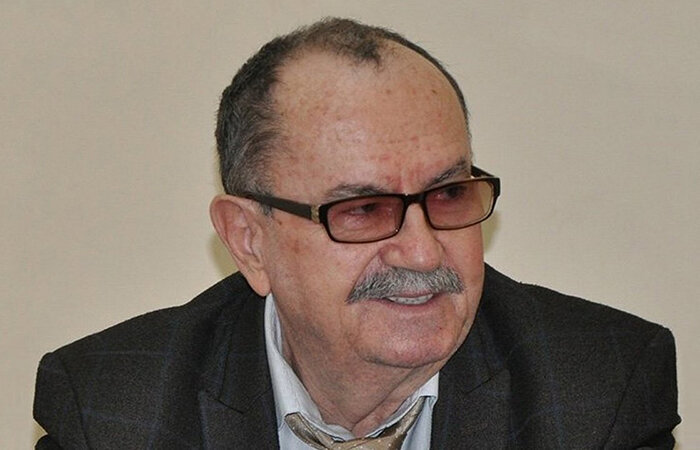 The agricultural industry is of great importance for the economy of Turkmenistan. It is an important supplier of raw materials for a number of industries — textile, carpet, leather and footwear, pharmaceutical, as well as chemical and construction materials production.
The agricultural industry is of great importance for the economy of Turkmenistan. It is an important supplier of raw materials for a number of industries — textile, carpet, leather and footwear, pharmaceutical, as well as chemical and construction materials production.
Undoubtedly, agriculture plays the most important role in the food industry as the main resource for ensuring food independence and security of the country. Valentin Trapeznikov, a columnist of the CentralAsia.news, an observer of Turkmen economy, touched upon the relevant topic in his new article.
The role of agriculture in the economy
In recent years, there has been an increasing role of the agricultural sector in the national economy. Thus, in 2017–2022, only once the share of agriculture in the structure of GDP was below 11% (in 2019 it was 10,8%). In other years, it fluctuated within 11.0-11.8%. Moreover, in 2021–2022, its values were 11,8% and 11,6%, respectively.
In 2022, the increase in gross value added of agriculture compared to the previous year was 5,7%. This is the third indicator after trade and industry and is significantly higher than in construction, transport and communications.
High performance was achieved in the production of many types of crop products in 2022. Thus, about 1.5 million tons of grain were handed over by grain growers, more than 1.2 million tons of raw cotton — by cotton growers, and over 2,300 tons of cocoons — by silk growers.
In general, the increase in the production of vegetables in the country compared to the previous year amounted to 15,2%, melons — 9,2%, potatoes — 30,4%, fruits and berries — 7,2% and grapes — 0,9%.
In 2023, the high dynamics of agricultural development continues. Thus, over three months, the production of vegetables increased by 4,7% compared to the previous year, and fruits and berries — by 2,7%.
Diversification of agricultural production
In order to diversify agricultural production, depending on soil and climatic conditions, a number of regions of the country specialize in growing certain crops. For example, rice is grown in Dashoguz and Lebap provinces, and sugar beet is grown in Mary and Balkan provinces.
At the same time, virgin lands are being developed in all regions. The areas are used for growing potatoes, onions, other vegetables, cereals, melons, fodder, oilseeds, nut crops, new orchards and vineyards.
Farmers of Turkmenistan have accumulated extensive experience in growing legumes and oilseeds. In particular, in 2022, Dashoguz farmers successfully completed the state order and harvested 7,300 tons of mung beans, 615 tons of noiba and 560 tons of sesame. In addition, farmers in the northern region of the country are becoming major producers of barley.
Private agricultural producers also grow sunflowers and that led to the establishment of oil production. The country has also begun growing Canadian rapeseed canola, an important oilseed with high nutritional value.
Growing mushrooms is actively developing in Turkmenistan. Thus, the country’s largest champignon farm in Akhal province allows growing and supplying to the market up to 2.5 thousand tons of mushrooms annually. Due to the use of scientifically based methods of cultivation of agricultural crops developed for each region, the fruit and berry sector is also intensively developing. The gardeners grow a wide range of fruits, including apples, pears, plums, apricots, peaches, cherries and pomegranates.
Olives and pistachios are cultivated in special climatic zones. In greenhouse complexes, private producers have established the production of non-traditional crops, including bananas and citrus fruits — mainly lemons. The business corps also actively cultivates berry crops — strawberries, blackberries, currants, gooseberries, raspberries and others.
Livestock industry
In 2022, the livestock industry demonstrated good performance as well. In particular, an increase in the number of cattle and small cattle, camels and poultry was recorded. There was also an increase in the production of all types of livestock products — meat, milk and eggs.
And in the first three months of 2023, the number of cattle in the whole country increased by 0,2%, small cattle — by 1,2%, camels — by 1,8%. In turn, during this period, the increase in meat production amounted to 0,6%, milk — 0,2%, eggs — 2,0%.
Export
The export potential of the agricultural industry has been increasing every year. For example, in 2022, the physical volume of vegetable exports increased by 77,1%, including tomatoes (47,6%). Turkmen greenhouse tomatoes are very popular in the CIS market.
One of the items of Turkmen exports is mung bean, which is produced in significant volumes by private grain farms. In addition, in 2022, wool exports increased by 29,5% and rawhides — by 15,0%. At the same time, the cost volume of raw silk exports increased by 69,0%.
In January-February 2023, the physical volume of exports of vegetables increased by 24,2%, and tomatoes — by 34,8%.
Food and light industry
The agricultural sector indirectly affects the increase in the export potential through the growing supply of food industry products (confectionery and canned fruits and vegetables), light industry products (textiles, carpets, shoes, clothing and other goods), pharmaceuticals, in particular, licorice root extract, as well as products of other industries using agricultural raw materials.





